It all started in the year 1046 AD, when the Holy Roman Emperor, Henry III, was given a bottle of a local vinegar while passing through a small town on the way to his coronation. That bottle contained balsamic vinegar, and since then it has become one of the most popular condiments the world over.
However, even though we’ve all enjoyed a drizzle of balsamic over a caprese salad, or mixed into a salad dressing, chances are what you’ve eaten wasn’t balsamic vinegar at all. In fact, almost all of the balsamic vinegar sold in US stores isn’t balsamic vinegar at all.
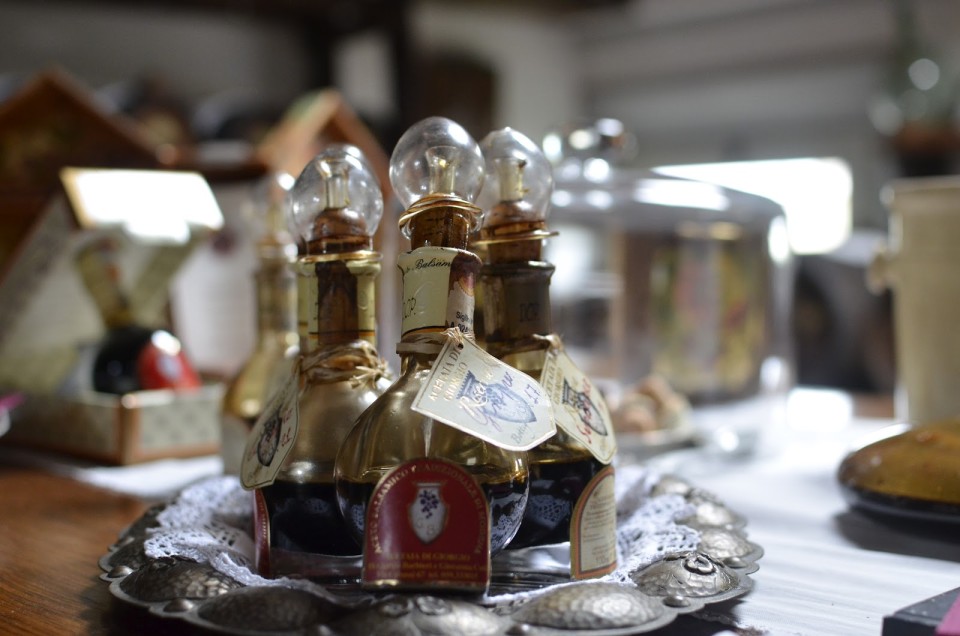
photo credit: latavolamarche.blogspot.com
Ok, so if the stuff in your fridge labeled “balsamic vinegar” isn’t balsamic vinegar, then what is balsamic vinegar?
Similar to champagne, balsamic vinegar is only considered “real” if made in certain areas of Italy and under strict guidelines. The balsamic vinegar comes from the Modena and Reggio Emilia regions and must be made with only a select few varietals of grapes. Most are of the Trebbiano or Lambrusco variety, however Ancellotta and Sauvignon are also used.
Unlike wine vinegars, which are made from wine, balsamic is made from unfermented grapes. The whole grape, including skin, seeds, and stems, are pressed into grape must. It is then cooked for hours until it becomes a thick, caramelized syrup. After that, the liquid is put into various wooden barrels –oak, chestnut, cherry, juniper, and mulberry are acceptable woods –in smaller and smaller sizes, as the water evaporates and the liquid thickens.
Balsamic vinegar is aged for a minimum of 12 years, though some bottles have been aged for over 75, or even 100 years. So, its no wonder real balsamic vinegar is pricey. Bottles can range from $40 to hundreds of dollars for a few ounces. Like bottles of wine, prices can go upwards of $400 for a single bottle.
Unfortunately, most brands you’ll find in a grocery store are just sweetened red wine vinegar with food coloring. These are usually not made from Trebbiano grapes and either aren’t aged at all, or are aged for a short amount of time in stainless steel barrels.
However, there are some producers who make their balsamic vinegar using the same methods as the official brands, they simply age it for a shorter amount of time (anywhere from 48 hours to 8 years) and make it in non-official regions. While these aren’t considered “real,” they are a great option for folks looking for a quality product without breaking the bank.
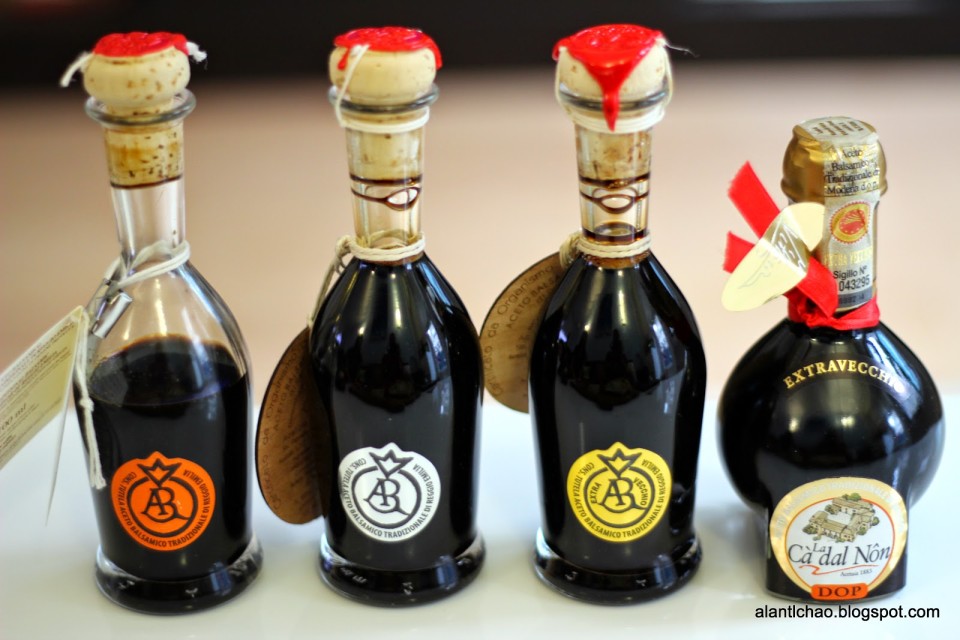
photo credit: alantlchao.blogspot.com
The taste and consistency of real balsamic vinegar is quite different from the fake stuff. It is thick and glossy with the consistency of maple syrup, whereas the grocery store brand of “balsamic” is a much thinner liquid. Real balsamic has a complex flavor profile, with notes of cherry, fig, honey, molasses, or chocolate. It also picks up the flavors of the wood casks in which its aged, which adds a smokiness to the taste. Authentic balsamic vinegar is good enough to sip like a liqueur; indeed it is consumed that way in Italy.
Imitation balsamic vinegar, on the other hand, is often very acidic. If you’re still unsure of whether your bottle of balsamic is a big fat faker, check the label. If it’s real, it should have one, and only one, ingredient –grape must (also sometimes denoted as “aged grape must” or “musto d’uva”).
However, even if a bottle passes all these check points, it’s possible it’s still not the real deal. It could still be a fake, a high quality and most likely still delicious fake, but a fake nonetheless. Check for certain markers on the bottle. The consortium seal should be over the cap, and the label should denote that it has been approved by the “consorzio.” Below are a few of the labels and seals that denote official balsamic vinegar. But check out the Modena website for information on all the brands that bear the official seal of approval.
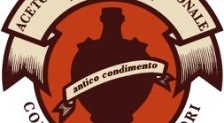
photo credit: balsamico.it
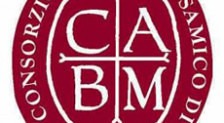
consorziobalsamico.it
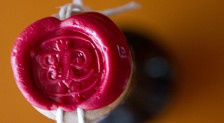
photo credit: dashofspiceandlife.com
Modena brand is only sold in bulb-shaped, 100ml bottles and have red or silver labels which indicate aging of either 12 or 18 years; a gold cap indicates a minimum of 20 years. Reggio Emilia balsamic vinegars are graded –red cap for affinato (fine), silver cap for vecchio (old), gold cap for extra vecchio (extra old).
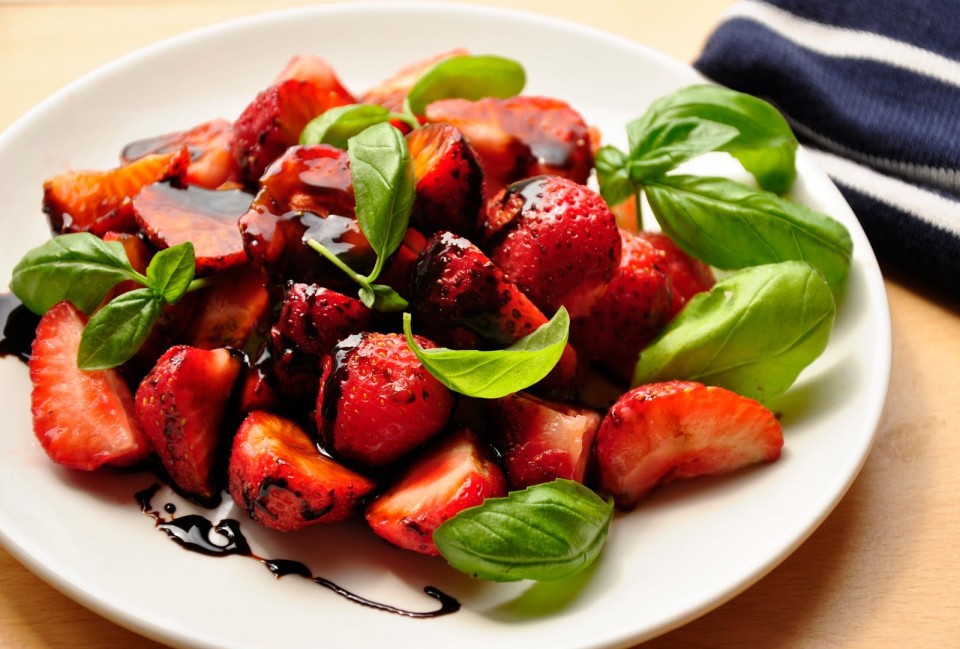
photo credit: mummyicancook.com
Though imitation balsamic vinegar has become a staple in sauces and salad dressing, the real stuff is far too precious and tasty to waste like that. (The more expensive bottles aren’t even poured, but are served by the drop!)
If you’ve got your hands on some of that delicious liquid gold, try putting it on fresh strawberries, parmigiano-reggiano cheese, or desserts like panna cotta, chocolate cake, or even poured over ice cream. If you’re looking to use it while cooking, be sure you don’t heat it up as that will ruin it. Rather, add it to dishes right before serving –drizzle some over authentic Italian dishes like scaloppine, bolito misto, or grilled pork chops.
I don’t know about you, but I’m about to go throw away that bottle of watery food coloring in my fridge and track down a most quality product. Who’s with me?
Lauren is a New York based actor/singer/writer. She is a graduate of the American Repertory Theater/Moscow Art Theater School Institute for Advanced Theater Training at Harvard University as well as the College of the Holy Cross. She’s a fan of beer, pasta, and academic establishments with unnecessarily long titles. Find her on stage, or online– she’s there often.